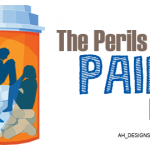NEW YORK (Reuters Health)—Many U.S. clinicians aren’t following risk-mitigation practices for opioid prescribing, new findings show.
“In response to this national opioid crisis, consensus-based safer opioid prescribing guidelines have been published and state laws regulating opioid prescribing practices have been enacted,” Daniel P. Alford, MD, of Boston University School of Medicine, and colleagues write in Pain Medicine, online Feb. 21.1
The researchers looked at whether registrants for an opioid-prescribing education program they developed were following five guideline-recommended risk-mitigation practices at baseline, establishing patient and prescriber agreements, informing patients about safe opioid storage and disposal, counseling them on respiratory depression and overdose risk, and discussing patient monitoring for opioid misuse.
Their sample included nearly 6,900 health providers (4,797 physicians, 1,395 advance practice nurses and 697 physician assistants) who participated in Safe and Competent Opioid Prescribing Education (SCOPE of Pain), a two-hour live or online case-based lecture, between 2013 and 2016.
Overall, 68% of registrants said they used at least four of the five practices for “most or all” patients, while 49% used all five for “most or all” patients. Forty-five percent said they used at least four practices with “all” patients, and 28% reported using all five practices in all patients.
Advanced practice nurses were more likely to report following all five practices with all of their patients than physician assistants or physicians. Providers in states with the highest rates of drug overdose were more likely to report using four or five of the practices in “all” and “most or all” of their patients, compared with those working in states with the lowest overdose rates.
“It’s great that folks are aware of what the right thing to do is for the most part, but just applying it more widely is what’s needed,” Dr. Alford tells Reuters Health by phone.
“We need to move beyond just imparting knowledge or knowledge acquisition and we need to better understand what the challenges are to implementing these things and training on those issues,” he adds. “So much of the emphasis on training on opiates and prescribing and chronic pain has been focused on the person who’s writing the prescription, and that’s asking too much. We need to train the entire team to work together.”
There is actually no evidence to support the effectiveness of the five practices included in the study, or for any other recommended strategies for reducing opioid misuse by educating clinicians, Dr. Alford notes.
“These are things that are not going to cause harm to your patients, so there’s really very little risk in doing them, but they do take up time,” he says. “Do we need to wait for a randomized controlled trial to say that we should be doing these things? Probably not.”
Douglas Gourlay, MD, an addiction medicine physician and educational consultant in private practice in Hamilton, Canada, says, “We still haven’t come to grips with the notion that everything has risk, and the challenge is what do you do with that risk and how do you manage it.”
One unintended consequence of addressing the opioid epidemic by restricting supply is that patients who have been on long-term prescription opioids can no longer obtain them, which can lead to the patient getting the drugs illegally or even using street drugs, notes Dr. Gourlay, who was not involved in the study.
Clinicians can’t always judge who’s at risk of misusing opioids, he added, given the role of genetics, personal history and other factors in determining vulnerability to substance abuse. He and his colleagues were the first to propose the idea of using “universal precautions” in pain medicine in a 2005 article.
“Physicians have always thought that they know their patients better than anyone else would know, but time and time again we really don’t know as much about our patients as we thought,” he says.
Reference
- Alford DP, Lazure P, Murray S, et al. National trends in prescription opioid risk mitigation practices: Implications for prescriber education. Pain Med. 2019 Feb 21. pii: pny298. [Epub ahead of print]



